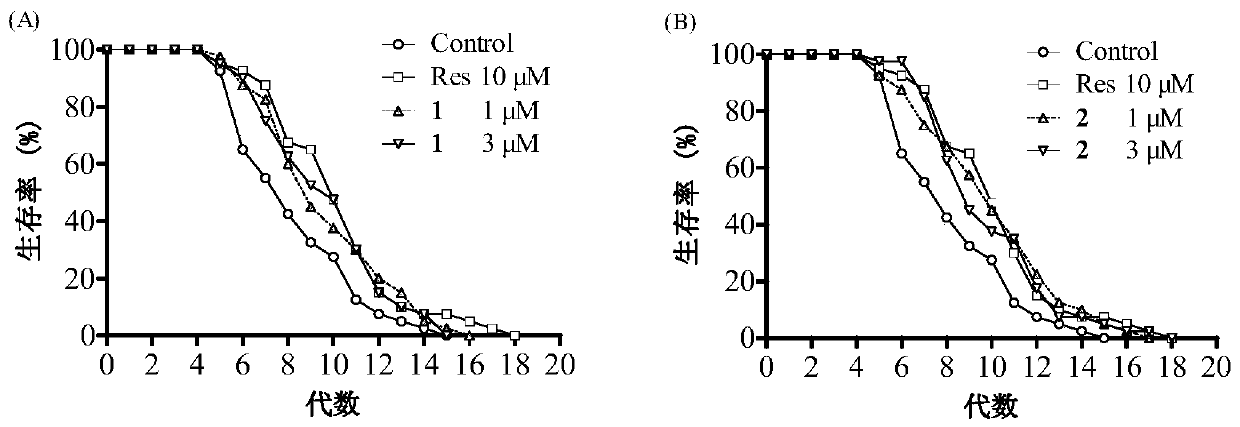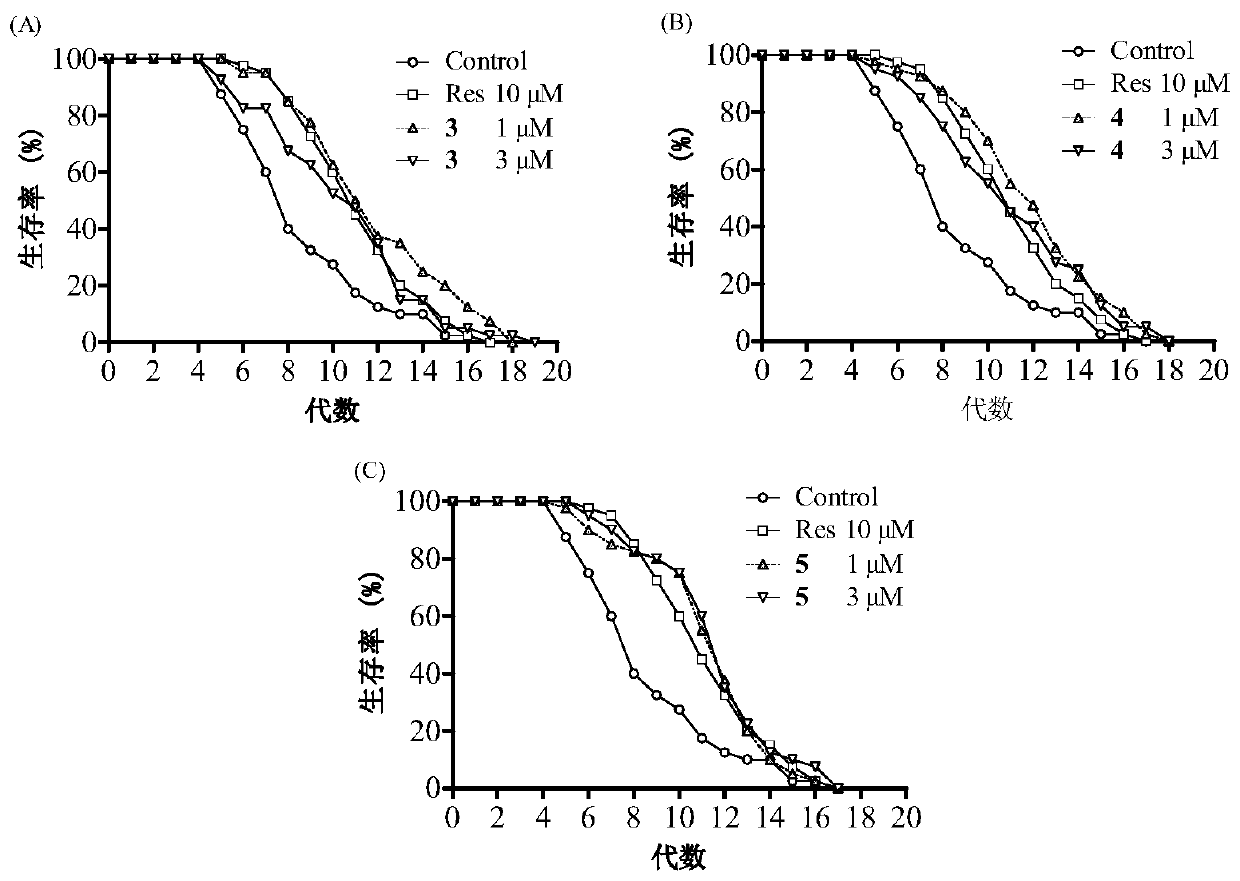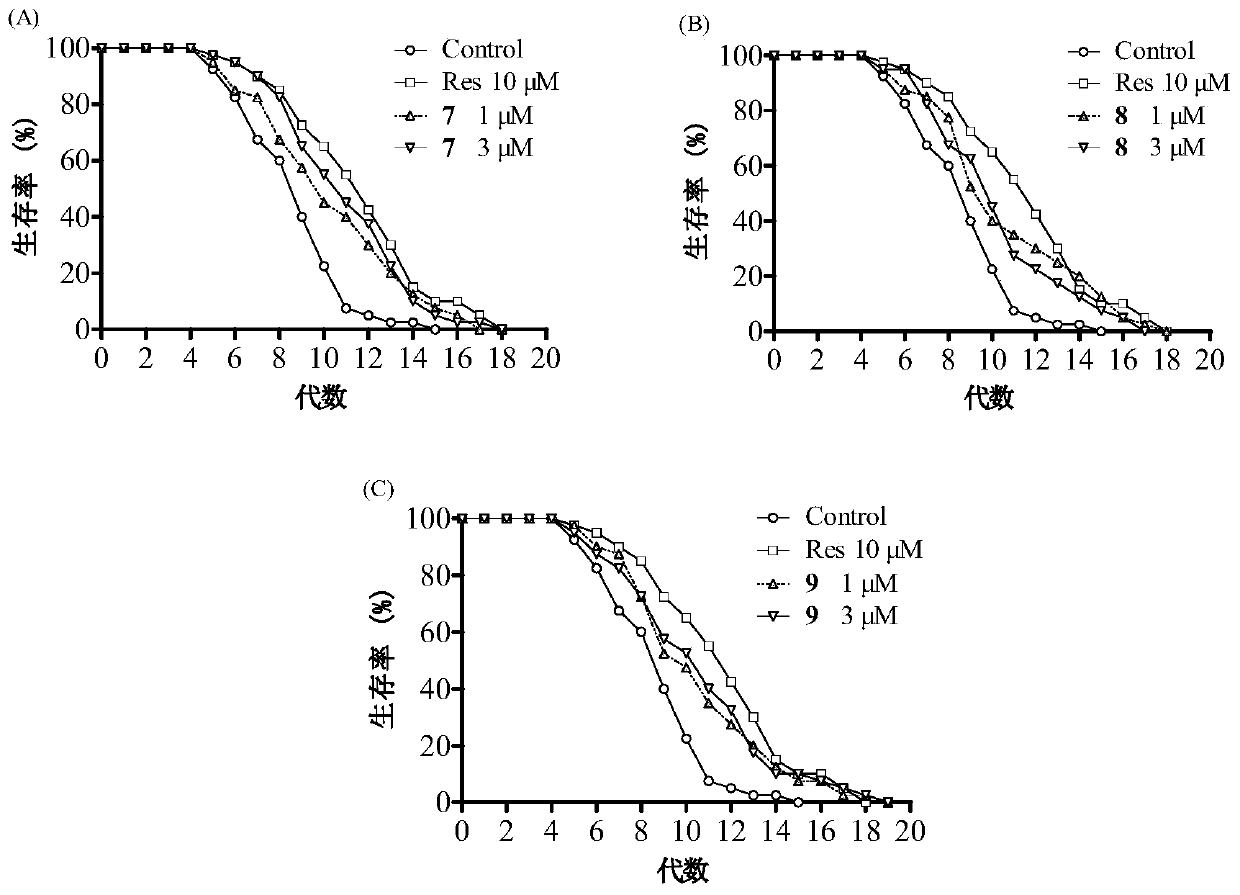Extraction method of cucurbitane-type triterpene compound and its anti-aging medicinal application
A cucurbitane-type and compound technology, applied in the field of drug extraction, can solve the problems of little drug, and achieve the effects of obvious activity, high safety, and prolongation of replicative lifespan
- Summary
- Abstract
- Description
- Claims
- Application Information
AI Technical Summary
Problems solved by technology
Method used
Image
Examples
Embodiment 1
[0039] Embodiment 1: Extract cucurbitane type triterpenoids in bitter melon fruit
[0040] A method for extracting cucurbitane-type triterpenoids from balsam pear fruits, comprising the following steps:
[0041] (1) After pulverizing 1.5kg (dry weight) of bitter gourd (Momordica charantia), extract it with 5L industrial grade methanol, place it in a shaker for 3 days with shaking at room temperature, vacuum filter, take the filtrate, and concentrate under reduced pressure to obtain Methanol extract 224g.
[0042] (2) Alternately use ethyl acetate and water to dissolve the sample of the methanol extract obtained in (1) and transfer it to a separatory funnel for distribution. After standing overnight, spin the ethyl acetate layer and the water layer to obtain ethyl acetate Layer sample 30g, water layer sample 170g.
[0043] (3) The sample of the ethyl acetate layer is separated by a silica gel open column (silica gel 200-300 mesh), and the elution system is n-hexane:acetone=99...
Embodiment 2
[0067] Example 2: Anti-aging activity analysis of compounds 1-11
[0068] The biological models currently used for anti-aging research mainly include mice, nematodes, fruit flies and yeast. In this application example, Saccharomyces cerevisiae was selected as a biological model to screen anti-aging active compounds. Yeast is a eukaryotic single-celled organism with a small genome, short life cycle, and low cost of culture. It is currently a commonly used aging model organism. Resveratol is a polyhydric phenol found in red wine, which has shown anti-aging and anti-aging-related disease activities in various animal models.
[0069] The analytical method includes the following steps:
[0070] (1) Take out the K6001 yeast strain from the -30°C refrigerator, wash it three times with PBS, 5ml each time, and remove the glycerol therein. Finally, 1 ml of PBS was added, blown to make it suspended, and then added to 5 ml of liquid medium (1% yeast powder, 2% peptone, 3% galactose). ...
Embodiment 3
[0080] Example 3: Activity Analysis of Compound 10 Improving Yeast Survival Rate
[0081] To test whether compound 10 can improve the survival rate of yeast, the test method is as follows:
[0082] (1) Wash the wild-type yeast BY4741 stored at -30°C with 5ml PBS three times to remove the glycerol; add 1ml sterile water, blow it to suspend it, add it to 5ml glucose medium (1% yeast powder, 2% peptone, 2% glucose); put it into a shaker, and shake (160r / min) at 28°C for 24 hours to restore its growth ability.
[0083] (2) Inoculate BY4741 into 25mL new glucose medium, adjust OD 600 The value is 0.1, and then incubated with a certain concentration of compound 10, a negative control substance, and a positive control substance (10 μM resveratrol) for 12 hours.
[0084] (3) After incubating BY4741 with samples and controls for 12 hours, about 200 cells from each group were coated with or without 5mM H 2 o 2 Glucose solid medium; calculate the survival rate of yeast cells after 2 ...
PUM
 Login to View More
Login to View More Abstract
Description
Claims
Application Information
 Login to View More
Login to View More - R&D
- Intellectual Property
- Life Sciences
- Materials
- Tech Scout
- Unparalleled Data Quality
- Higher Quality Content
- 60% Fewer Hallucinations
Browse by: Latest US Patents, China's latest patents, Technical Efficacy Thesaurus, Application Domain, Technology Topic, Popular Technical Reports.
© 2025 PatSnap. All rights reserved.Legal|Privacy policy|Modern Slavery Act Transparency Statement|Sitemap|About US| Contact US: help@patsnap.com



